“A Camel is a horse designed by committee”. Alec Issigonis

Mar 15, 2017
A camel is an even-toed ungulate within the genus Camelus, bearing distinctive fatty deposits known as “humps” on its back. The three surviving species of camel are the dromedary, or one-humped camel (C. dromedarius), which inhabits the Middle East and the Horn of Africa; the Bactrian, or two-humped camel (C. bactrianus), which inhabits Central Asia; and the critically endangered wild Bactrian camel (C. ferus) that has limited populations in remote areas of northwest China and Mongolia. 94 % of the world’s camels are one hump or dromedaries.
The average life expectancy of a camel is 40 to 50 years. A full-grown adult camel stands 6 ft 1 in at the shoulder and 7 ft 1 in at the hump. Camels can run at up to 40 mph in short bursts and sustain speeds of up to 25 mph, they weigh 660 to 1,320 lbs.
Camels do not directly store water in their humps as was once commonly believed. The humps are actually reservoirs of fatty tissue. A 1,300 lb camel can drink 53 gallons of water in three minutes, depending on temperatures they can go without replenishment between 8 to days.
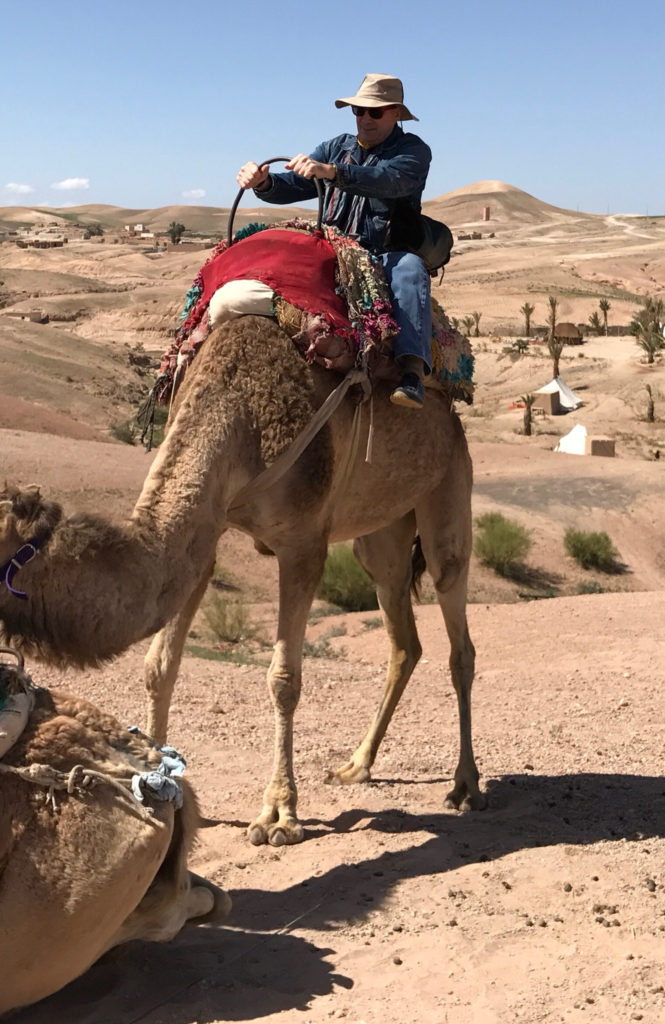
Camels may have first been domesticated by humans in Somalia and southern Arabia, around 3,000 BC.
The hair of camels has been used for tentmaking, clothing, and accessories for hundreds of years.
Camel milk and meat are rich in protein, vitamins, glycogen, and other nutrients making them essential in the diet of many people. Camel meat has been eaten for centuries. It has been recorded by ancient Greek writers as an available dish at banquets in ancient Persia, usually roasted.
We started this morning with a visit to the pharmacy, and a consultation with a lovey Muslin woman pharmacist. I’m coming down with a cold, I probably caught from one of those little urchins in Fes…….the pharmacist gave enough medication to kill a camel…….and that is where we go next.
So our trek begins after an hour drive southwest of Marrakech, we get off the highway into a gravel road the lead us into nowhere we arrived at d’Agafay Dessert a dry hilly rocky area, and the oasis tent hotel of La Pause, after the customary mint tea welcome, were led to our ships of the Desert.
We were introduced to our Camels, I got a very vocal blustering male camel with the biblical name of Jacob and David a smaller sweet female camel, that her name escapes us.
There are 3 difficult times during the riding experience.
1. Getting on and off, the angles give you the feeling of following forward or doing a backflip so you hold on for dear life 2. The gait of a camel ride is awkwardly clumsy, not the smoother motion of a horse but an overall side to side and up and down, rolling motion no wonder they have been nickname the ship of the desert.
3. The seating position is is a wide-legged sitting stance – my most personal hated position in Yoga…..and Kari if you are reading this I still hate doing it, but I held it for over an hour.
So off we go for an hour ride on our dessert yacht, up hills, through narrow canyons with nothing to look at for miles except barren rocks, an imposing blue sky, and far in the horizon the snow cap peaks of the Atlas Mountains.
The solitude silence and beauty of the landscape is humbling.
We returned back to base camp, for another sumptuous feast, serve under an open tent, furnish with low tables and cushions set up for a sheik.
On the menu; Avocado butter and tomatoes parfait, with micro greens topped with shredded Parmesan Slaw, made with cabbage, carrots, parsley, blonde currants, and raspberries. Three Tangines filled with, couscous fluffy and light, a meat dish prepared with apricots pears, and prunes ( no I did not roll off the wagon, but the temptation was there) and carrots, potatoes, zucchini, and peas all dishes prepared to perfection. Dessert panna cotta with fresh strawberries, cherries, and raspberry. All washed down with half a bottle of wine and lemon and mint-infused water.
We were timing ourselves since the chef back at the Riad is planning another sumptuous fish meal for us this evening.
Back on our 4×4 for the drive back to Marrakech and last site seeing, all my pills had kicked in by the time and I passed out the minute we got moving.
El Badi Palace (meaning The incomparable palace) is a ruined palace. Commissioned by the Arab Saadian sultan Ahmad al-Mansur, sometime shortly after his accession in 1578, its construction was funded by a substantial ransom paid by the Portuguese after the Battle of the Three Kings.
The palace took twenty-five years to build, with construction finally completed around 1593 and was a lavish display of the best craftsmanship of the Saadian period. Constructed using some of the most expensive materials of the time, including gold and onyx, the colonnades are said to be constructed from marble exchanged with Italian merchants for their equivalent weight in sugar. The original building is thought to have consisted of 360 richly decorated rooms, a courtyard, and a central pool.
There are several large pavilions on the site, which are believed to have been used as summer houses. The largest on the site is known in Arabic as Koubba el Khamsiniya, which translates into ‘The Fifty Pavilion’, named either after its surface area of some 50 cubits or the fact that it once contained 50 columns. The site also includes several stables and dungeons.
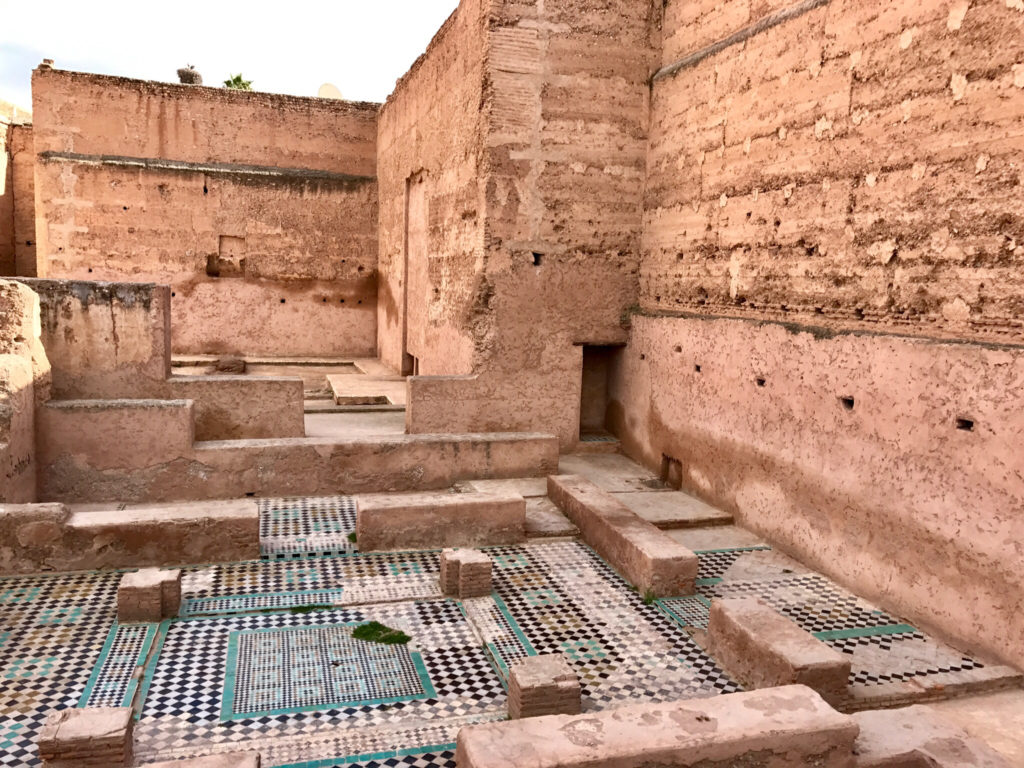
After the fall of the Saadians and the rise of the Alaouite dynasty, the palace entered a period of rapid decline. Sultan Ismail Ibn Sharif stripped the building of its contents, building materials, and decorations, to be used in the construction of his new palace in his new capital at Meknes.
Don’t you just love recycling through the ages!
The palace today is a well-known tourist attraction. The complex contains a museum, totaling exhibits the restored 12th-century minbar that once stood in the Koutoubia Mosque that was painstakingly restored by the MET, it contains over a million inlay pieces some no bigger than a sesame seed, extremely imposing.
From the museum, we walked back to our Riad again passing 1001 stores through the plaza, and after left, right, left, right, left we are again home.
Rest before dinner have to restore our strengths and packing.
Dinner
A salad pile high with romaine, avocado, cucumbers, pepper and tomatoes with the lights olive oil and lemon dressing, light and refreshing A selection Fish fillets marinated in typical Moroccan species accompanied by sautéed miniature potatoes, zucchini and carrots Desert we requested the poached pear again……incredible but it was better than the first time.
All this washed downed with a bottle of liquor cal white wine
I might have to re-mortgage the house to pay for our dining experiences at a Riad Joya, but every morsel will be worth it.
Tomorrow travel day, as we continued on to Sintra, Portugal
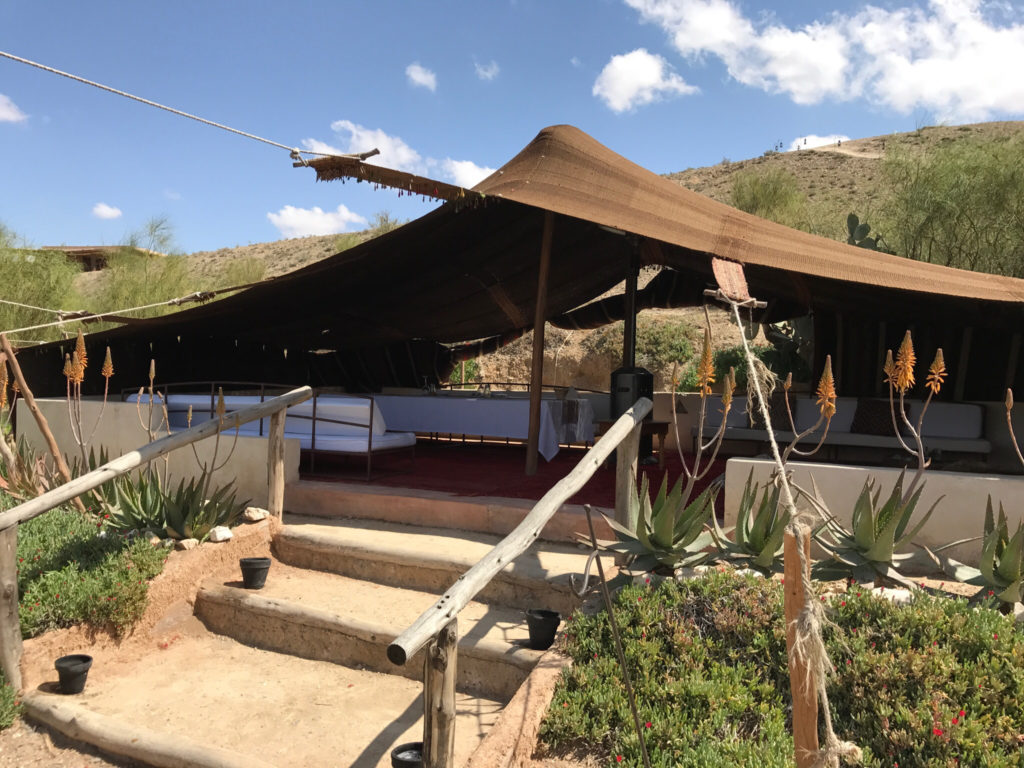
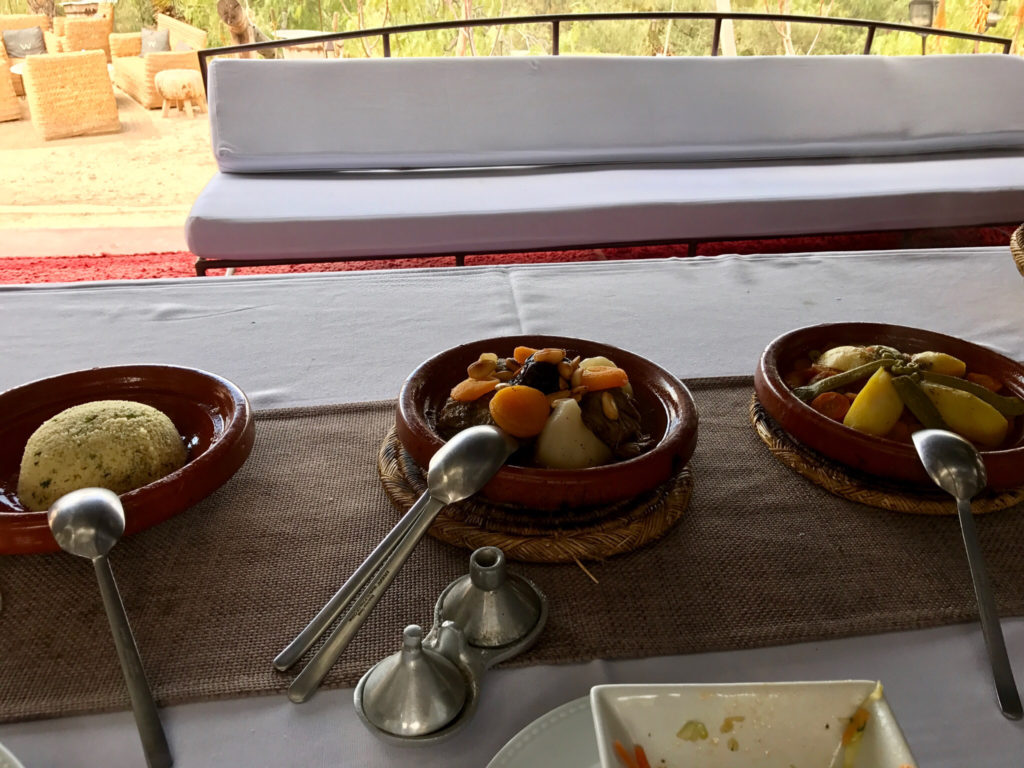
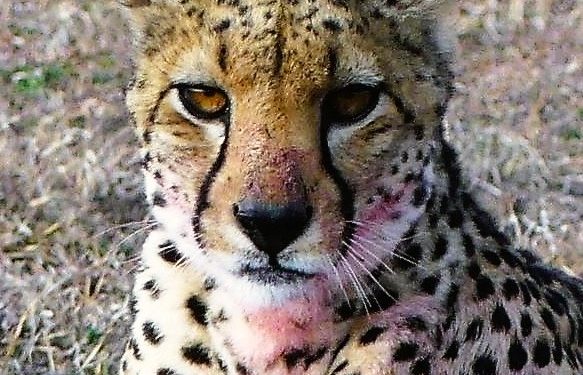

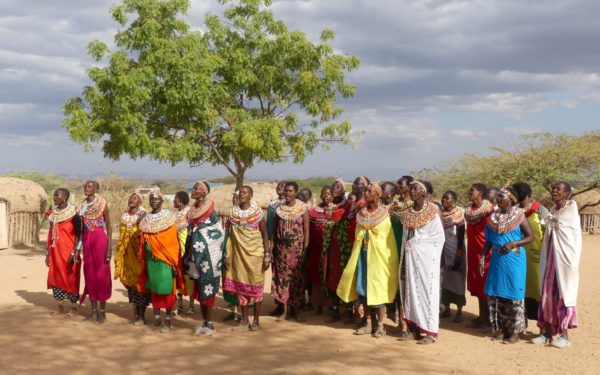
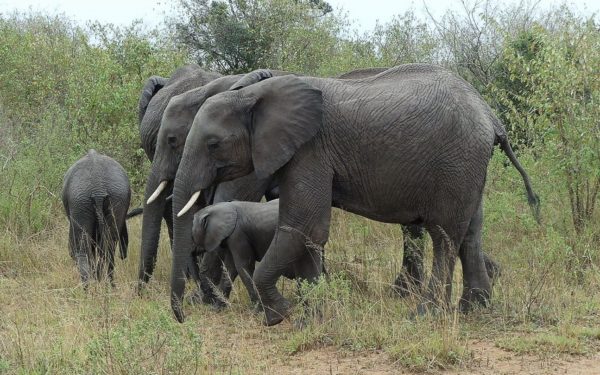
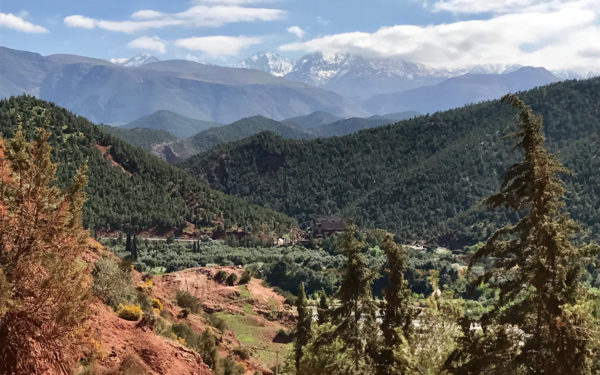
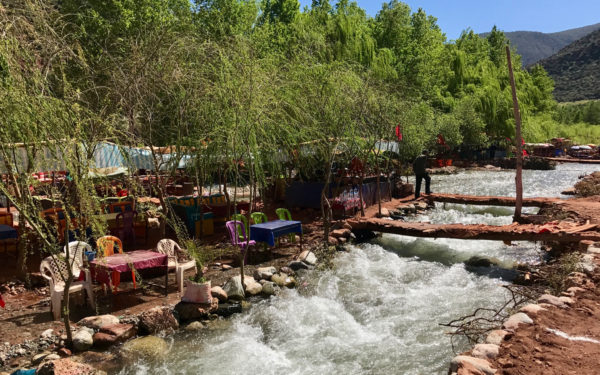
46 thoughts on ““A Camel is a horse designed by committee”. Alec Issigonis”